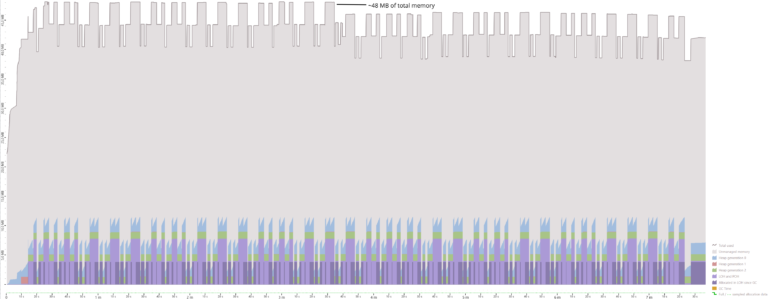The downside of such a well-known interface is that the log level chosen by the 3rd party developers may be unfitting for the software using it. For example, Entity Framework uses the log level Information for logging generated SQL queries. For the EF developers it is a good choice because the SQL query is an important information for them – but for our customers using EF this information is for debugging purposes only.
Luckily it is very easy to change the log level of a specific logging source (EF, Kestrel etc.). For that we need a simple proxy that implements the interface ILogger. The proxy is changing the log level to Debug in the methods Log and IsEnabled and calls the corresponding method of the real logger with new parameters.
public class LoggerProxy : ILogger
{
private readonly ILogger _logger;
public LoggerProxy(ILogger logger)
{
if (logger == null)
throw new ArgumentNullException(nameof(logger));
_logger = logger;
}
public void Log(LogLevel logLevel, int eventId, object state,
Exception exception, Func<object, Exception, string> formatter)
{
if (logLevel > LogLevel.Debug)
logLevel = LogLevel.Debug;
_logger.Log(logLevel, eventId, state, exception, formatter);
}
public bool IsEnabled(LogLevel logLevel)
{
if (logLevel > LogLevel.Debug)
logLevel = LogLevel.Debug;
return _logger.IsEnabled(logLevel);
}
public IDisposable BeginScopeImpl(object state)
{
return _logger.BeginScopeImpl(state);
}
}
To inject the LoggerProxy we have to create another proxy that implements the interface Microsoft.Extensions.Logging.ILoggerFactory. The method we are interested in is CreateLogger that gets the category name as a parameter. The category name may be the name of the class requesting the logger or the name of the assembly. In this method we make the real logger factory create a logger for us and if this logger is for Entity Framework we return our LoggerProxy wrapping the real logger.
public class LoggerFactoryProxy : ILoggerFactory
{
private readonly ILoggerFactory _loggerFactory;
public LogLevel MinimumLevel
{
get { return _loggerFactory.MinimumLevel; }
set { _loggerFactory.MinimumLevel = value; }
}
public LoggerFactoryProxy(ILoggerFactory loggerFactory)
{
if (loggerFactory == null)
throw new ArgumentNullException(nameof(loggerFactory));
_loggerFactory = loggerFactory;
}
public ILogger CreateLogger(string categoryName)
{
var logger = _loggerFactory.CreateLogger(categoryName);
if (categoryName.StartsWith("Microsoft.Data.Entity.", StringComparison.OrdinalIgnoreCase))
logger = new LoggerProxy(logger);
return logger;
}
public void AddProvider(ILoggerProvider provider)
{
_loggerFactory.AddProvider(provider);
}
public void Dispose()
{
_loggerFactory.Dispose();
}
}
Finally, we need to register the factory proxy with the dependency injection container.
public void ConfigureServices(IServiceCollection services)
{
var factory = new LoggerFactoryProxy(new LoggerFactory());
services.AddInstance(factory);
}
For now on the log messages coming from Entity Framework will be logged with the log level Debug.









